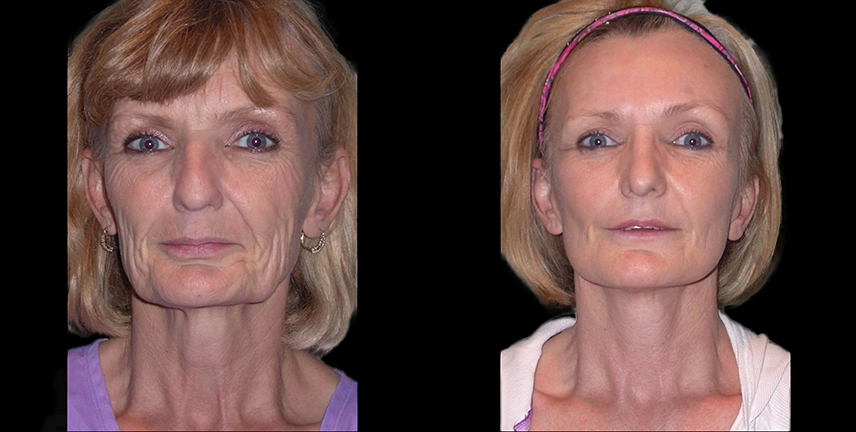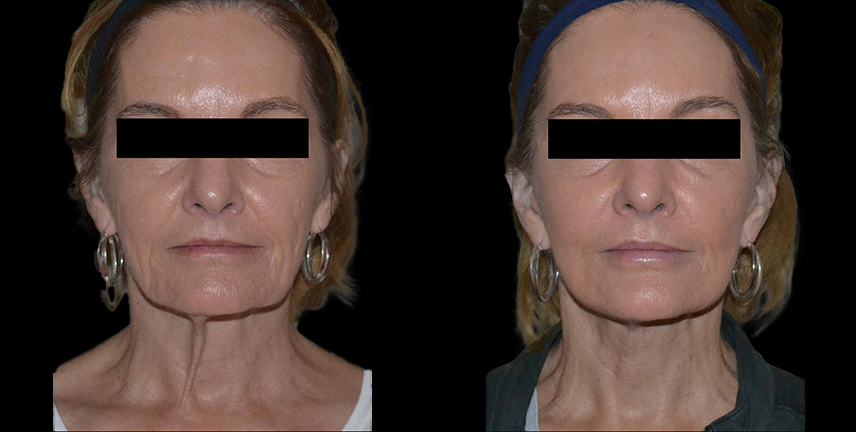The facelift has been around for more than 90 years and has gotten quite a few makeovers itself to produce better results for aging patients. While a facelift, also known as face lift skin tightening, can involve a variety of techniques and variations, the underlying principle is to reshape and resize the loosened facial tissues and tighten the skin for a smoother, younger look. However, times have changed and Seattle area plastic surgeon, Dr. Marosan, recognizes the fact that the face has 3 dimensions; therefore, volume and contouring must be restored as well.
“I had a lower facelift and chin lift about 7 weeks ago after choosing Dr. Marosan for the procedure and I couldn't be happier. He took the time to thoroughly explain what was involved and didn't pressure me to book the surgery.”
– Patient
Facelift
Before & After
Plan Your Procedure
Surgeon & Facility Fees
Recovery Time
Average Procedure Time
Post-Op Follow-Up
Procedure Recovery Location
Additional Services & Pricing
*Includes Surgeon's Fees and Facility Fees
Deep Plane Extended Facelift
Buccal Fat Pad Removal
VASER Liposuction of Jaw and Neck with Renuvion
Bullhorn Lip Lift
Overview
“I am considering a face lift and have been to see several doctors, I was so impressed with Dr. Marosan I have cancelled my other consultations.”
– Patient
Dr. Marosan performs the short scar facelift in the appropriate patient, where the length and placement of the incision is taken into account in order to better gain access to the treatment area to remove excessive skin and re-suspend the soft tissues. This results in restored volume and a more lifted, contoured look to create a more youthful appearance. In addition, since the incisions are shorter, scarring is minimized and the patient will not have that overworked, wind tunnel look that’s often a side effect of traditional face lifts.

During/After Surgery
All facelift procedures are performed in an accredited surgical facility with general anesthesia. Even though this is considered an outpatient procedure, there are some cases where the patient stays overnight for monitoring. It is normal to experience bruising and swelling after the surgery, and patients will feel as if their face is being pulled tight. This subsides within a couple of weeks. Optimal results will be evident after several months. It is important that activities are limited to help create a safe and quick healing.
Surgical Technique
The technique used during a facelift is dependent on the patient’s facial features and conditions. Most surgeons will always aim for the less invasive technique, but some patient cases are severe and will require internal tissues, fat and skin to be manipulated. Patients must also understand the procedure in detail, including the level of invasiveness, placement of incisions, what layers of tissues will be corrected, and what risks may be associated with the surgery before moving forward.

Skin-Only Facelift?
Also referred to as the cutaneous facelift, this technique removes excess and loose skin to create a tightened look. The remaining skin is repositioned to lift sagging cheeks and jowls.
It also improves the profile along the jaw line. With this facelift technique, the muscles or fat tissues are left untouched. As the treatment focuses on the skin only, recovery is quick. This is ideal for those who still have good tone muscle and distribution of fat, but find the skin losing elasticity in some areas.
Traditional Facelift (SMAS)
SMAS stands for: Superficial Musculo-Aponeurotic System, which is a tough tissue complex that is primarily active when it comes to facial expression. With normal wear-and-tear due to age, gravity and personal habits, muscle tissue loses its form and becomes displaced significantly for those over 50. This particular facelift is considered the standard when it comes to this cosmetic procedure. With lengthy incisions on the side of the face, from the temple to the lower hairline behind the ear, the skin will be peeled and lifted to reshape contours. If there is excess fat and skin, these will also be removed.
Deep Plane Lift
For those who have severe cases of drooping and skin folds that are normal with aging and extensive sun exposure, a deep plane lift may be the best approach. This is especially true for those whose facial profiles need extensive reshaping on areas that typically have the volume and tight contours. It addresses the soft tissues of the midface, nasolabial folds, jowls. These are the areas that are loose, descend inferiorly and forward and a SMAS technique is less likely to correct. This involves a highly specialized skill set and the plastic surgeon must be carefully selected. The risk of nerve injury is less than 1% in any of these techniques.

Mini Facelift
Also called as a short-scar facelift because of the shorter incisions made, a mini lift is a quick treatment that corrects the lateral sagging skin of the face. Many patients initially consider this technique, but this doesn’t correct any severe issues and usually renders short-term results. Patients who undergo this procedure are most likely to also stage a full facelift as a final step to fully rejuvenate and reshape the face to its youthful curves.

Frequently Asked
Questions
Non-Invasive Techniques?
Cosmetic surgery is constantly evolving and always finding ways to minimize the invasiveness of procedures. There are countless options that are considered less invasive than a facelift, including wrinkle relaxers such as BOTOX®, injectable fillers, microdermabrasion and chemical/laser peels. These alternatives aim to correct signs of aging such as wrinkles, as well flatten and soften folds and contours. The effects, while effective, are often short-term lasting about 6 months to a year. Although these procedures can be safely repeated, for some, a facelift may be a better, more permanent option.
How Natural?
Immediately following a facelift procedure, the patient will feel tightness and a pulling sensation. This is normal as the facial tissues, skin and muscle adjust to their new positions. It is important to choose a reputable plastic surgeon that has years of experience in facial cosmetic surgery. A doctor with experience in facial surgery will create natural, smooth results that will last for years to come.
Visible Scars?
A tradional facelift requires a long cut from the temple to the lower hairline, but the scars will be well concealed within the hairline and natural creases on the face. With the lesser invasive techniques, the scars heal pretty well and will almost be completely invisible to the naked eye.
Best Age?
Anyone can consider a facelift as soon as evidence of aging starts taking a toll on the skin. Generally, patients who are age 50 – 70 consider a facelift. Personal habits and environmental conditions can impact the skin and there are patients who are only 40 that are also good candidates for a facelift.
Why Choose Dr. Marosan?
- Board-certified plastic surgeon with over 30 years of experience in aesthetic surgery
- Widely recognized for his advanced body sculpting and facial rejuvenation techniques, including natural-looking facelift results
- Expert in modern facelift procedures that restore youthful contours without the “overdone” appearance
- Extensive training in the latest body and facial contouring technologies, offering fully customized treatment plans
- Personally oversees every aspect of your care—from your initial consultation through to post-operative recovery
- Available 24/7 after surgery, ensuring constant support for a smooth and confident recovery journey
- All procedures performed under gentle intravenous sedation, avoiding general anesthesia for greater comfort and safety
- Surgeries conducted in our accredited, state-of-the-art on-site surgical suite for convenience and continuity of care
- Utilizes a rapid recovery protocol, helping patients return to daily life faster with minimal downtime
- Holds staff privileges at Overlake Medical Center for seamless care if hospital services are needed
- Elite member of ASPS, ASAPS, and ISAPS—organizations that require certification by The American Board of Plastic Surgery, ensuring the highest standard of surgical excellence











